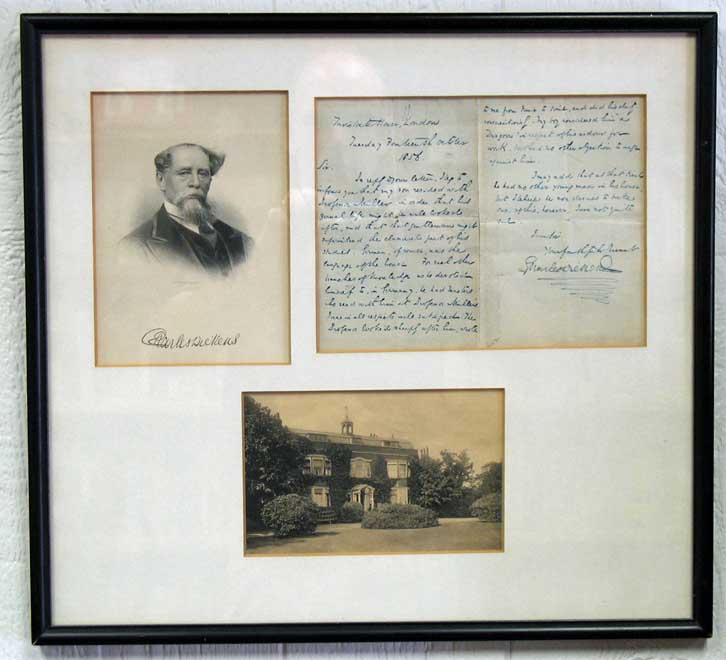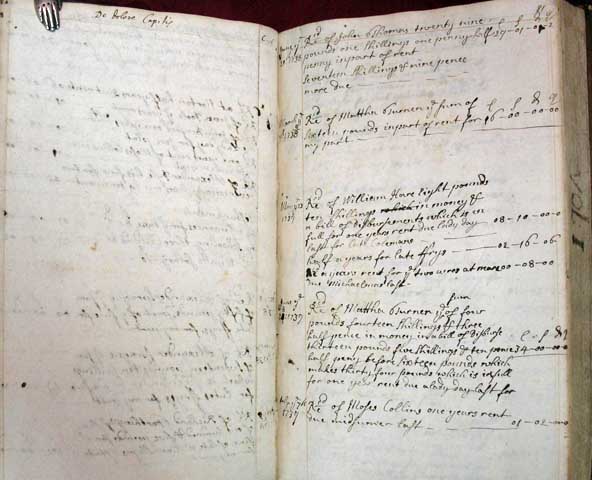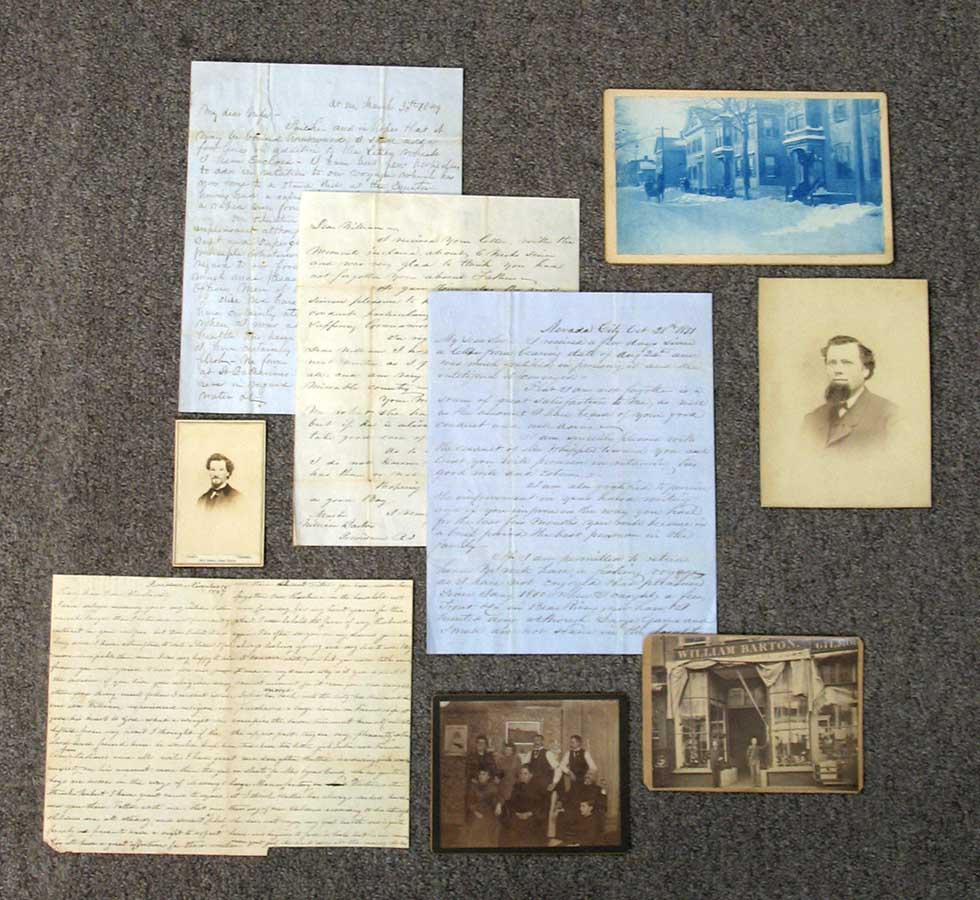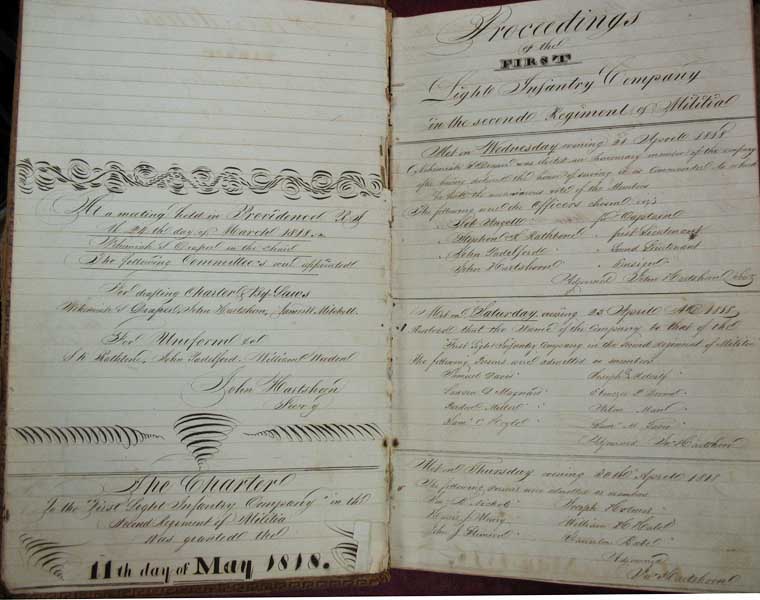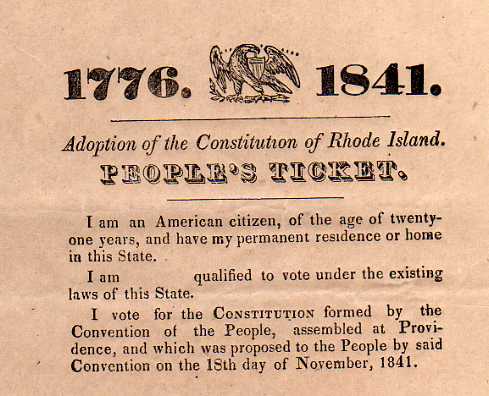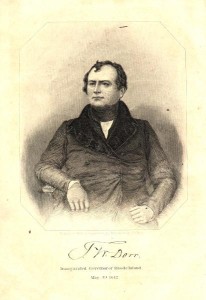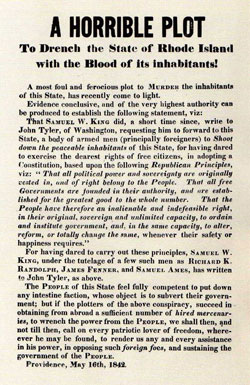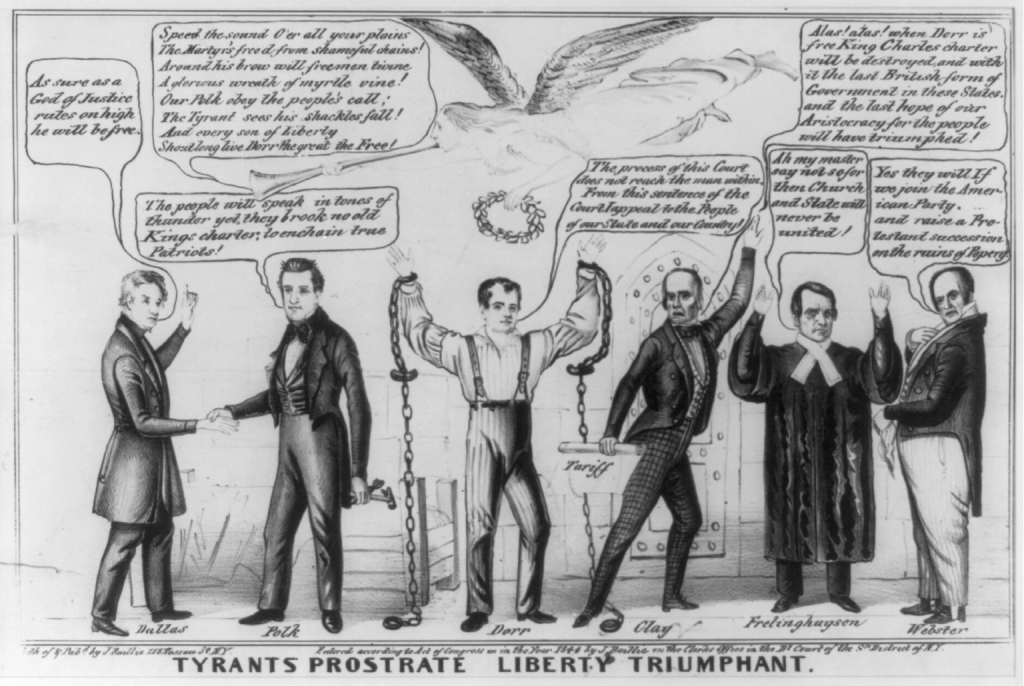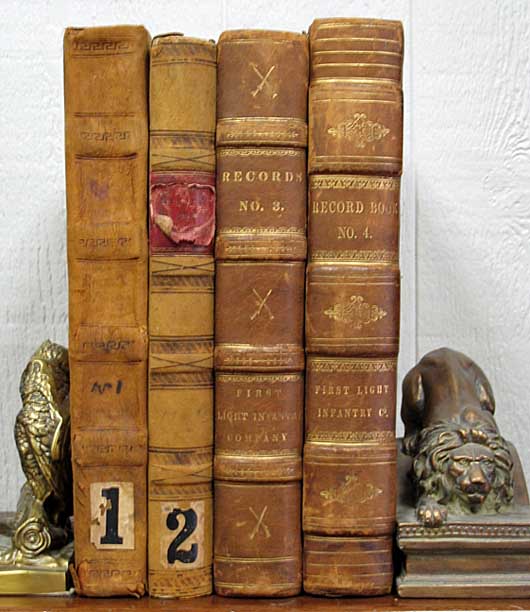Manuscript. “A work written by hand” informs Glaister, synonymous with “holograph.” Or, as is often abbreviated, Ms.
A two-letter abbreviation that can cause the collector’s heart to flutter; the curator’s eye to gleam; the author to despair of ever finishing.
Why this reaction? Is it the unique aspect inherent to the term? A printed book, by its very nature and concept, can be expected to be encountered in multiple copies; not so the manuscript that gave rise to the book. It is, more often than not, expected to be found in no more than one copy, with additional the variant, not the norm.
With this in mind then, Tavistock Books presents our list for March, In Manuscript. It consists of thirty items all created “by hand”: letters, book manuscripts, ledgers, journals, diaries, sketch books,a nd even a few pencil sketches [to round out the numbers].
Temporally, the items range from the 17th century to the 20th. As is our custom and wont, subjects represented are diverse, from rent records, to transatlantic travel, to baseball. Prices range from $125 to $20,000.
We invite you to peruse the list! Should you have any inquiries, please don’t hesitate to contact us. We thank you for your attention, and we hope that you find something of interest while browsing these offerings.
If you’d like to receive email notification of our select acquisitions lists and other bookish news, please sign up for our email newsletter.
Featured Items in Manuscript
Rhode Island Light Infantry Company Records, 1818-1873
The Rhode Island First Light Infantry Company was formed in 1818 as a state militia company based in Providence, Rhode Island, and was affiliated with the Second Regiment of the Rhode Island militia. It became the First Light Infantry Regiment in 1863. This regiment saw no active duty, with its activities more i n consonance with a social club vice a well-trained military unit. However, per the RIHS notes on this organization, the 1st Light Infantry Company did play an important role in providing trained soldiers when circumstances required. The Company helped suppress the Olney’s Lane race riots in 1831, primarily by arresting white rioters.
n consonance with a social club vice a well-trained military unit. However, per the RIHS notes on this organization, the 1st Light Infantry Company did play an important role in providing trained soldiers when circumstances required. The Company helped suppress the Olney’s Lane race riots in 1831, primarily by arresting white rioters.
The Company was also involved in suppressing the Dorr Rebellion, a fomentation and later a short-lived, armed insurrection led by Thomas Wilson Dorr agitating for changes to Rhode Island’s electoral system. In the case of this particular Rebellion, there were militia members on both sides of the fight! Pages 61 through 66 of Volume 2 discuss the events of May 19th, 1842. Many of the Company members also served in the American Civil War in Companies C and D of the First Regiment, Rhode Island Detached Militia.
The activities recorded herein, written in pen and by necessity by many different individuals given the span of time involved, are detailed and informative accounts of the daily, weekly, and monthly meetings of the Company, most often held at the Armory in Providence. Together, these four volumes are the primary source for the history of the First Light Infantry Company, and are invaluable for understanding the inner workings of the Company and their [occasionally] significant role in Rhode Island history. Details>>
Journal Across the Atlantic
“On Board the Eagle from London to / Philadelphia. / John Ker Captain – Born in Ireland.” So begins this interesting diary recorded by an unidentified male passenger making a transatlantic voyage on this ship. The first written page of the journal records the significant personages of the crew, including their nationality, from Captain Ker to “Sam A Sailor Born in America” and “George. The Cook A Black from Bengall”. Passenger names are noted: four in the passenger cabin, with five more in steerage.
The diary records shipboard life, almost daily, for the next two months, beginning with leaving London for Gravesend, and like many passengers, “On Entering the downs I began to be Sick in the afternoon… … 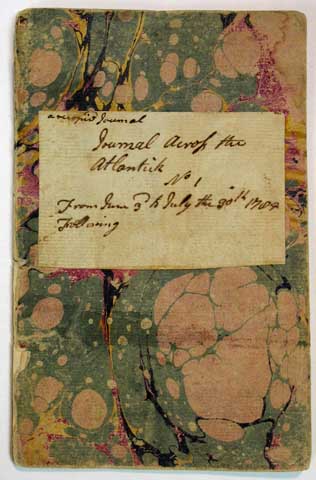 Fraser sitting upon the Binacle going down to the Steerage over the Sailors asleep Read with an audible voice a Chapter or two out of the word of God as so unusual affair disturbed the men below who arose in a passion and an uproar ensued whitch Occationed the Interference of the Captain — and where is the wonder! … Saw a Grampus (?) Whale along side of us very near this day and he made his appearances several times as he passed from us. June 20 – 1785. Monday. Saw a sail at a distance. … Tuesday 21 … saw a sail ahead of us.”The ship was Spanish, and the diarist continues with a description of an at-sea meeting between the two vessels.
Fraser sitting upon the Binacle going down to the Steerage over the Sailors asleep Read with an audible voice a Chapter or two out of the word of God as so unusual affair disturbed the men below who arose in a passion and an uproar ensued whitch Occationed the Interference of the Captain — and where is the wonder! … Saw a Grampus (?) Whale along side of us very near this day and he made his appearances several times as he passed from us. June 20 – 1785. Monday. Saw a sail at a distance. … Tuesday 21 … saw a sail ahead of us.”The ship was Spanish, and the diarist continues with a description of an at-sea meeting between the two vessels.
The diarist continues in such a vein, recording passenger activity – “Fraser and Mark Denison play at Cards until Dark” – and observing crew interaction – “The mate then thought his dignity insulted…” In late July, another vessel rendezvous is recorded .. “They offered us some oranges and fruit…” By this time, the tone of the journal has tended towards patience, with food [“potatoes gone”] and water [“… drink dirty Water”] becoming an issue…. “But I keep as much an Equanimity as possible and more I Flatter myself than any on Board.”
The last entry of the journal is “Saturday morn July 30th”. “A many moths or Small Butterflies came on board – a dispute whether they Bred on board – Cox [steerage passenger] maintains the affirmative but they were never seen coming with the wind it was thought very improbably and tho he supported his theory [?] only it is Carried against him – …” So ends this record of a transatlantic voyage… an illuminating peek into a passenger’s shipboard life while en route the New World. Original mss journals such as this are rare in commerce. Details>>
Autograph Letter Signed with Steel Plate Engraving of Charles Dickens and Photograph of Gadshill
This delightful Dickensiana is matted and framed in a simple black, wooden frame. The label on the frame’s reverse appears to be pre-World War II. Charles Dickens, writing to an unknown correspondent, tells of of his son Charley’s stay and schooling in Germany, with one Professor Muller who supervised “the classical part of his studies.” Dickens continues, “I was in all respects well satisfied,” though Charley “considered him ‘a Dragon in respect of his ardour for work.'” This letter is partially published by Storey & Tillotson in Volume 8 [p. 206] of the Pilgrim Letters, with their abbreviated text coming from a 1901 Walter M Hill catalogue. The actual letter, here offered, has a concluding five-line paragraph not previously recorded. Details>>
Amergin the White Stag
Sven Berlin was a poet, a painter, a sculptor, a dancer and a writer. His 1962 roman-a-clef novel The Dark Monarch was written with the prime motive of venting his anger over the hypocrisies of an over-close and competitive art St. Ives art colony. It was not well received by his fellow art colony members, who all too 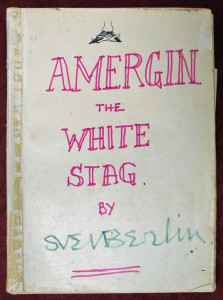 easily recognized themselves within the pages. The book was withdrawn after four successful libel actions.
easily recognized themselves within the pages. The book was withdrawn after four successful libel actions.
Contrary to what some writers report, Berlin did not abandon the genre of fiction following the unpleasantness that The Dark Monarch brought. In 1964 he published his novel Jonah’s Dream: A Meditation on Fishing, a volume full of Berlin’s accomplished and sensitive vignettes of fish and fishermen, and in 1971, his knowledge of the gypsy counter-culture emerged in his novel Dromengo: Man of the Road. It would be a full seven years before Amergin appeared. The story is a mystical fable of encounters between a man, a woman, and a stag in “The Great Forest in the South.”
Many of Berlin’s publications drew upon personal experience. Berlin was part of the D-Day invasions of World War II, having rejected his former stance of conscientious objector, but the experience led to a breakdown and he returned to Cornwall to find restitution through his art. From that time on, the redemptive, restorative and spiritual power of art and nature would remain his guiding principle. The same theme runs through his works, including the two volumes of his ‘autosvenography’: The Coat of Many Colours and Virgo in Exile, that being a belief in the abstract and mystical forces that guide both nature and humankind. His writing is rich in imagery and metaphor, exhibiting an often dream-like quality. This manuscript is no exception. Details>>
Somerset Mss Rent Book, 1690-1755
Apparently this volume was originally intended and begun as a medical text, to be comprised of thirteen volumes, or chapters. Pages [i-iv] contain the index for the medical entries, in Latin. The pages, corresponding to the entry in the index, are captioned with the appropriate heading. Turning the volume over and beginning with the final unnumbered page and working back to page 457, the text is comprised of accounting entries of amounts paid for things such as bread for orphans, for scavenger, stocker, water, and the parson. There are entries for the window tax, poor tax, the king’s tax for the land lord, lamps, etc.
The year is divided into four quarters: Lady Day Quarter, Midsomer (midsummer) Quarter, Michaelmass Quarter, and Xmass Quarter. The entries in these ten pages are the earliest, dating from 1690 to 1708, and provide a fascinating glimpse into the economy and financial obligations of the citizenry of this time.The volume is then turned over again and the entries pick up at page [v] continuing to page 115 with entries for rents and mortgages collected in the parish of Norton Fitzwarren, Taunton district, Somerset, England.
While many entries are written in the first person — “Then I rec’d the first rent myself” — the identity of the individual or individuals making the entries is not recorded. The financial entries for 1720 on appear to be by a different individual than those of 1690 through 1709.The text as a whole provides a fascinating glimpse into the economy and financial obligations of the citizenry of Norton Fitzwarren, providing important and valuable information as to the cost of living at the end of the seventeenth century to the mid-point of the eighteenth century in one English parish. Many of the same names appear for the 65 recorded years of rents and mortgages, and by consulting parish records one can see the relationships between the citizens through marriages; the life cycle of the parish through births and deaths. Details>>
Robert H Barton Family Correspondence Collection, 1849-1871
Robert Barton, of Providence, Rhode Island, left his wife Julia Anna Bennett Barton and four children –William, Emily, Harriet, and Julia–in the winter of 1849, headed for the California gold fields. The collection begins with Robert’s departure in 1849, and continues through 1871. Of the 72 letters, six are from Robert –one to his wife, and five to his son. The remainder are to Robert, from divers family members, and even his pastor, all with the common theme of “come home.”
From this correspondence, and the fact Robert Barton is not buried with the rest of his family in the North Burial Ground, Providence, Rhode Island, it is questioned whether the man ever did leave California and return to Providence 9even though the RI census notes his presence). Robert writes to his wife of his good intentions for heading to California, and consistently states “if he is permitted to return home “; however, it is fairly clear that he never intended to do so. In one letter to his son, he says that William should look to a gentleman there in Providence for advice and guidance, discourages him from coming to California, etc.
And while Robert’s letters contain a smattering of comments on his efforts to find gold, and the account statement from Gregory & Waite Groceries & Provisions gives a glimpse into the daily fare of a ’49er, this collection’s value lies elsewhere than California. The collection does extensively chronicle the history of one Providence, Rhode Island family, their struggles and successes. Herein then lies the richness of the archive, which documents the life of this Providence family, after the “man of the house” succumbs to gold fever. Details>>
The Album of Sarah Knight
To S. K. —“Deign to accept the boon tis all I ask/And if thou think’st I fall too far behind/Let abler pens hereafter meet the task/And yield thee something suited to thy mind.” From our study of this splendid little volume, it would appear to have been used similar to an autograph album wherein friends would pen a  poem, or a snippet from such for the owner. Some of the poems may have been copied by the owner into the album. Several of the entries have been illustrated in watercolor or thinned black ink, by an accomplished hand. The writing is in almost all cases very legible, and penned by those who had obviously received high marks for penmanship.
poem, or a snippet from such for the owner. Some of the poems may have been copied by the owner into the album. Several of the entries have been illustrated in watercolor or thinned black ink, by an accomplished hand. The writing is in almost all cases very legible, and penned by those who had obviously received high marks for penmanship.
From the entries we have gleaned that this volume was owned by at least three individuals: Sarah Knight, T. M. Knight, and M.S. Conard, with the latest entry (1860) being penned by Conard. In conducting research, we can find several women named Sarah Knight who lived in Philadelphia and New York. We can also find a G. Coggshall (the presenter of the album), a Sophia Mix, and an Arabella Clark–all names given in the volume–living in either Philadelphia or New York at the same time, but without more to go on, we cannot pinpoint with any certainty the exact identity of these individuals. There was a Sarah Knight, of Philadelphia, who was born around 1804, which would have made her around 21 when this volume was given to her, which would seem fitting. The poems herein are typical for the 1820’s, and the illustrations are exquisite. It’s quite a lovely little example of early 19th Century autograph/ friendship books. Details>>
Related Reading:
A Look Back at Long-Lost Manuscripts
Preserving Antiquarian Photographs and Photo Albums
Collecting Antiquarian Diaries, Journals, and Correspondence
Thanks for reading! Love our blog? Subscribe via email (right sidebar) or sign up for our newsletter--you’ll never miss a post.

